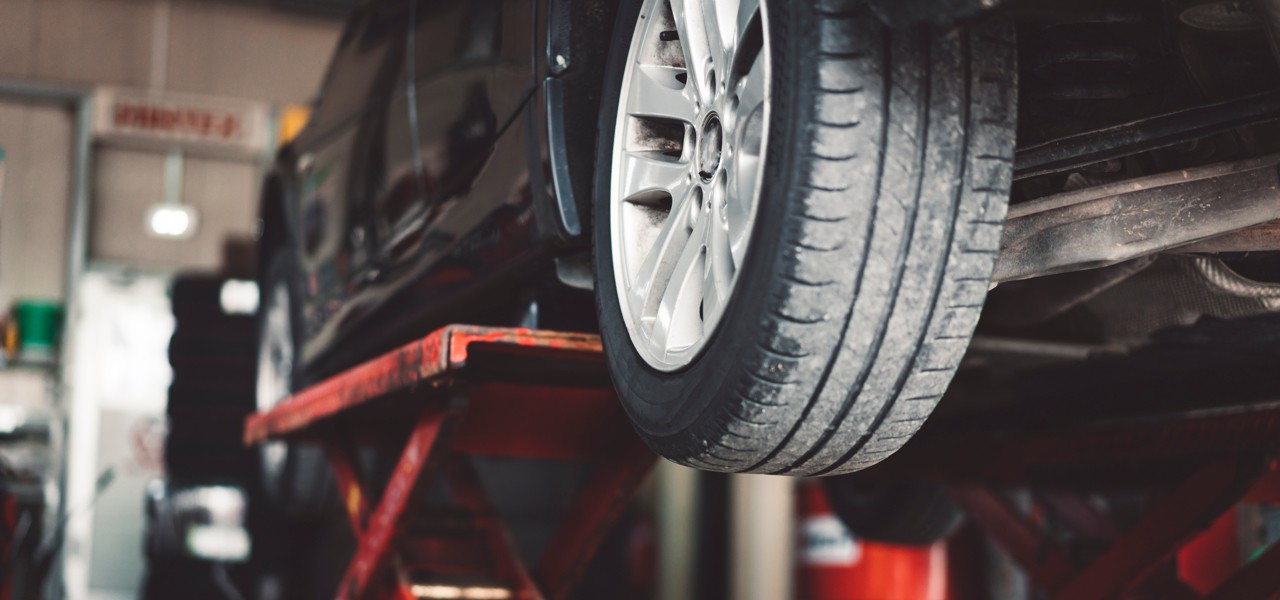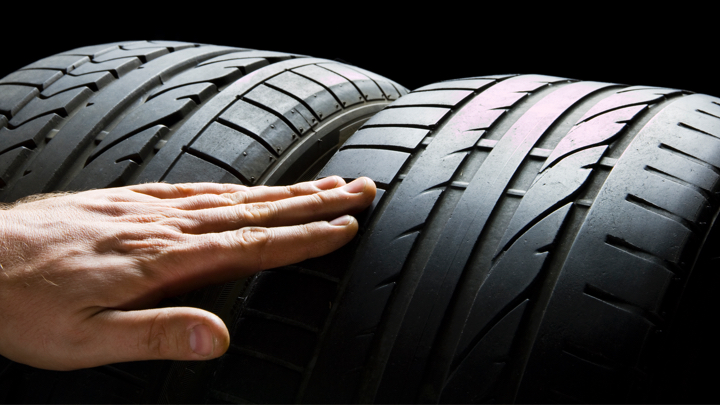
Shocks 101
Why Do Tires Wear Unevenly?
What Causes Uneven Tire Wear?
Constantly in contact with the road, your tires play a vital role in the ride, handling, braking and steering of your vehicle. Irregular tire wear, either across the tire tread or around the circumference of the tire, is an indication that there may be a problem that needs to be addressed. Uneven tire wear can be caused by:
Driving Habits
How you drive can influence how your tires wear. Abrupt turns, lane changes, accelerating too fast or slamming on your brakes could result in flat-spotting (excessive tread-loss on concentrated areas of the tire), causing premature wear. Go over a curb at the wrong angle and the impact could bruise or damage the “carcass” or internal structure of the tire, leading to side-wall damage or bulging.
You may also scrape rubber off the tire which will lead to uneven tire wear. Do your best to avoid running over road debris and obstacles like potholes, broken glass and road kill; these all can cause abrasion, which leads to unexpected tire failure. Examining and adjusting your driving habits can help increase the lifespan of your tires.
Bad Wheel Alignment
Your wheels are independently attached to your car by a complex suspension system with multiple interconnected links and many adjustment points. Each adjustment must be set to the manufacturer’s specifications to ensure that your tires are properly aligned both while driving straight down the road and while turning the car. A bad alignment adjustment may result in many different patterns of irregular tire wear. Take a look at your tires; wheels that are misaligned will have reduced or uneven rubber depths as compared to those that are properly aligned. If you suspect that your alignment may be off, consult your service provider.
Improper Tire Size or Pressure Settings
Under-inflated or over-inflated tires can cause irregular tire wear across the width of the tire tread. If your tire shows more wear in the center of the tread than at the two sides, it has been over-inflated; if the two sides of the tread are worn more than the center, the tire was under-inflated.
Proper inflation according to your owner’s manual recommendations will prevent the irregular wear from continuing. The best way to avoid this problem is to check your tire pressure once a month and adjust it accordingly. To make this easier, many late model vehicles monitor tire pressure and will alert you if the pressure in a tire is low. If the tire pressure light is illuminated, take care of it right away. As an added bonus, properly inflated tires will help maximize your gas mileage.
For those who tow or have hardworking vehicles, the tire pressure should be adjusted based on the weight of the load. There is typically a higher pressure with more load, and less pressure when unloaded.
Worn Shocks and Struts
Shocks and struts help ensure consistent tire-to-road contact that is so important for optimal performance. When your vehicle’s shocks and struts are worn out, the car can bounce, causing the tires to leave the road. This bouncing can cause cupping or scalloping of the tires which is when pieces of rubber are gouged out of the tire. Unbalanced wheels or worn suspension components can also cause inconsistent tire cupping and in rare cases evenly distributed cupping.
In addition, on many newer vehicles with advanced suspension geometry, you may notice accelerated tire wear in lieu of traditional tire cupping.
Unbalanced Wheels or Tires
An unbalanced wheel and tire assembly, or a tire with excessive road force variation, can also cause uneven tire wear. An unbalanced tire can cause vibration when a wheel and tire doesn’t rotate smoothly about the axle; it may hop up and down or wobble from side-to-side as it rotates. The solution is to have your service provider balance your wheel and tire assemblies.
Bent or Damaged Wheels
Hitting a pothole is not only annoying; it can bend a steel or aluminum wheel rim or may cause a crack to form in a portion of the wheel. Either instance may cause a vibration in the tire as it rotates, resulting in irregular tire tread wear. A wheel inspection by your service provider can tell you if this is the cause of your irregular tire wear.
Worn or Damaged Suspension or Steering Components
Suspension components like ball joints, tie rod ends, control arms, control arm bushings and wheel bearings are designed to hold your wheel and tire securely in position. If any of these parts are worn, this can result in uneven tire wear. Since the wheel and tire are no longer held securely the wear typically results in sporadic tire wear patterns. Have your service provider conduct a thorough inspection of your steering and suspension system to ensure that everything is in proper working condition.
Preventing Tire Wear Problems

The best way to prevent uneven tire wear is to check the pressure in your tires monthly and visually inspect your tires on a regular basis. When taking your vehicle in for regular maintenance, ask your service provider to check the wheel alignment and wheel balance according to the manufacturer’s recommendations listed in your owner’s manual. If you notice that your tires are wearing unevenly, be sure to make an appointment with your service provider to pinpoint the source of the problem at your earliest convenience.
Learn more about quality shocks, struts, and strut assemblies, find the right car part, or find a local repair shop today.
The content in this article is for informational purposes only. You should consult with a certified technician or mechanic if you have questions relating to any of the topics covered herein. Tenneco will not be liable for any loss or damage caused by your reliance on any content.